11 Types of Wildflowers That Grow in Washington State: Identification Guide (with Pictures)
-
Kristin Hitchcock
- Last updated:
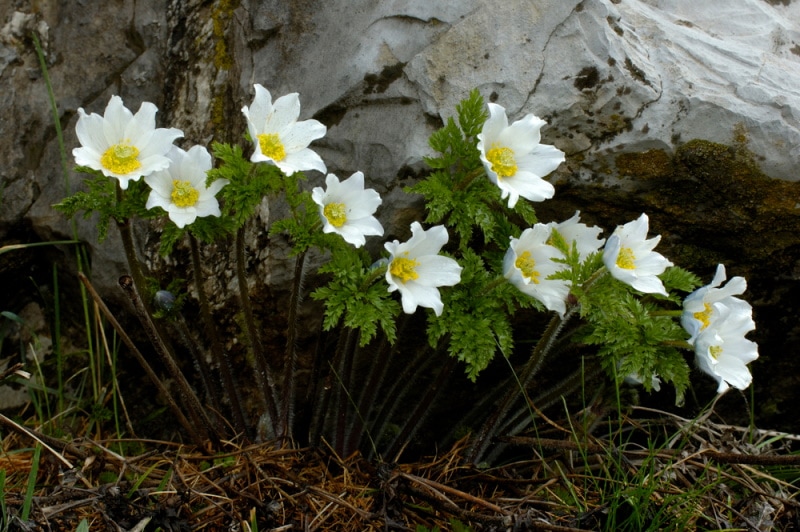
Washington is home to many native wildflowers. These flowers vary widely in shape, size, and coloration and some tend to grow better in certain areas than others. There are quite a few that also grow widely in other states, though some rarer wildflowers may grow mostly in Washington.
Luckily, wildflowers are pretty easy to identify when they’re flowering. The color, shape, and size of the petals are often a clear giveaway. Therefore, it doesn’t take much background knowledge to be able to identify wildflowers easily.
 The 11 Types of Wildflowers That Grow in Washington State
The 11 Types of Wildflowers That Grow in Washington State
1. Scarlet Paintbrush

| Height | 1–3 feet |
| Color | Orange, yellow, and red |
This wildflower usually blooms from May to September. Scarlet Paintbrush looks very unique from other flowers, creating a bit of a “starburst” effect. The very core of the flower is red, but it fades to orange and yellow at the tips. There are actually many sub-species of this flower, but they can be challenging to tell apart from each other.
Usually, you’ll find this plan in sunny meadows. They require a decent amount of water to thrive, so the area typically has to be pretty wet.
2. Foxglove

| Height | 2–6 feet |
| Color | White, purple, pink |
Most people have heard of a Foxglove, even if they don’t exactly know what it looks like. Technically, the flower is native to Europe. However, it has naturalized to many parts of North America after being brought by settlers. Usually, it can be found in areas with heavy human activity, such as paths and parking lots. If you see one, you can bet that humans frequent the area.
This flower is very beautiful to look at, which is likely why it isn’t considered “invasive.” However, it can sometimes crowd out native species.
3. Red Columbine
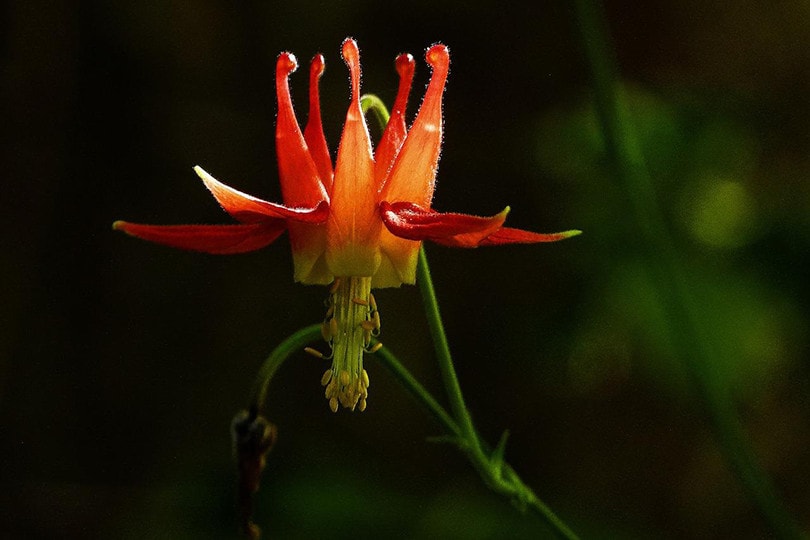
| Height | 1–3 feet |
| Color | Yellow, red |
This beautiful flower raises up in the summer months on a thin stem. The flower is often so much bigger than the stem that it can seem like a miracle that the plant is standing at all. The bloom leans down from the stem, though not necessarily on account of its heaviness.
Butterflies and hummingbirds absolutely love this flower. Its bright colors make it easy to identify—for both pollinators and humans.
4. Subalpine Daisy
| Height | 8–28 inches |
| Color | Purple, blue, pink, white, yellow |
All in all, this flower can look a bit plain. It comes in a variety of colors, though none of them are particularly bright. Usually, you’ll find these flowers growing in clumps, as many blooms can appear on one stem.
These flowers are most easily identified by their gentle colors. They are much more pastel when compared to other flowers.
5. Spreading Phlox

| Height | 2–8 inches |
| Color | Purple, pink, white |
This flower stays very close to the ground and forms a bit of a “mat” structure. When it blooms, the flowers densely cover the forest floor. Each bloom does have a branch all to itself, though—a trait that helps set it apart from other types of flowers.
Usually, you’ll find this plant blooming in the hotter months of May, June, July, and August.
6. Common Yarrow
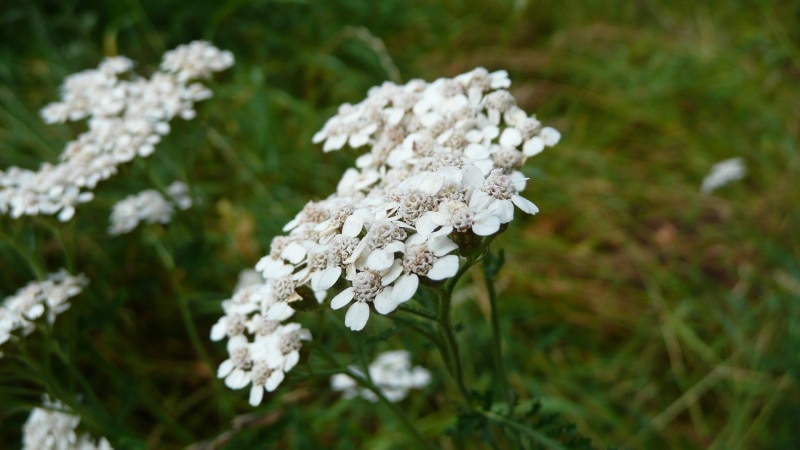
| Height | 4-39 inches |
| Color | White, yellow |
This flower is extremely common, making it one of the easiest flowers to find in the state. The small flowers grow in clusters at the end of a branch. When fully grown, the plant can look quite bushy. This plant is often a choice for flower gardens. However, they also attract bees and other pollinators.
When used in gardens, these plants are very easy to take care of without being “invasive.”
7. Monkshood
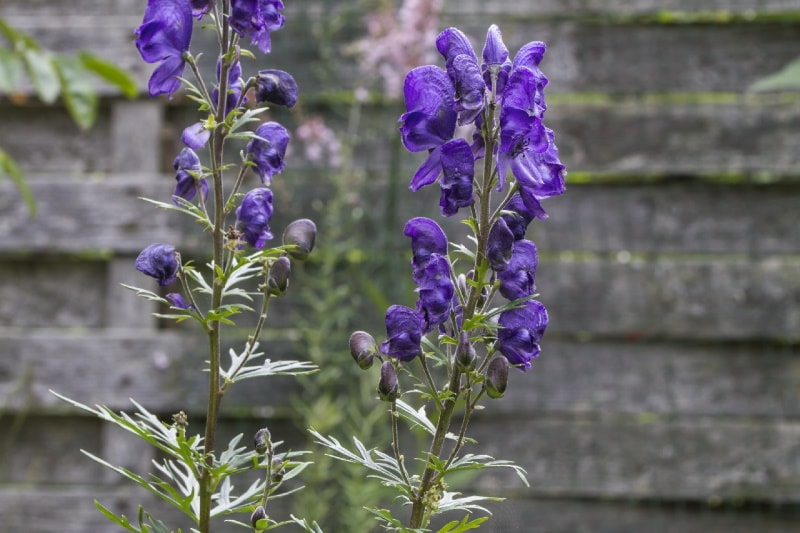
| Height | 2–6 feet tall |
| Color | Blue, violet |
Monkshood is a member of the buttercup family. However, this flower gets extremely tall and often has dark violet flowers. So, you’d be forgiven for not knowing that it’s related to the much smaller buttercup.
This wildflower does grow in a very obvious fashion. It’s hard to miss its purple-blue flowers, especially when they reach up as tall as a person. Therefore, this is one of the easiest plants to identify.
8. Merten’s Mountain-heather
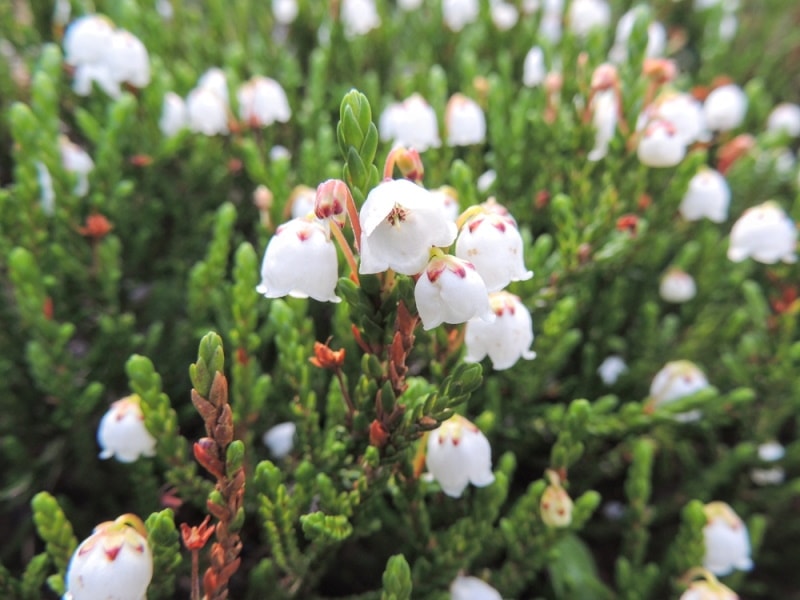
| Height | Up to 12 inches |
| Color | White, pink, purple |
This very small shrub resembles a moss more than a shrub. It blooms extremely small, bell-shaped flowers that hang from very small stalks. As you might imagine, this plant is very delicate, and the blooms don’t usually last very long.
This wildflower also likes growing in similar conditions to moss—cool, damp, and dark.
9. Fairyslipper
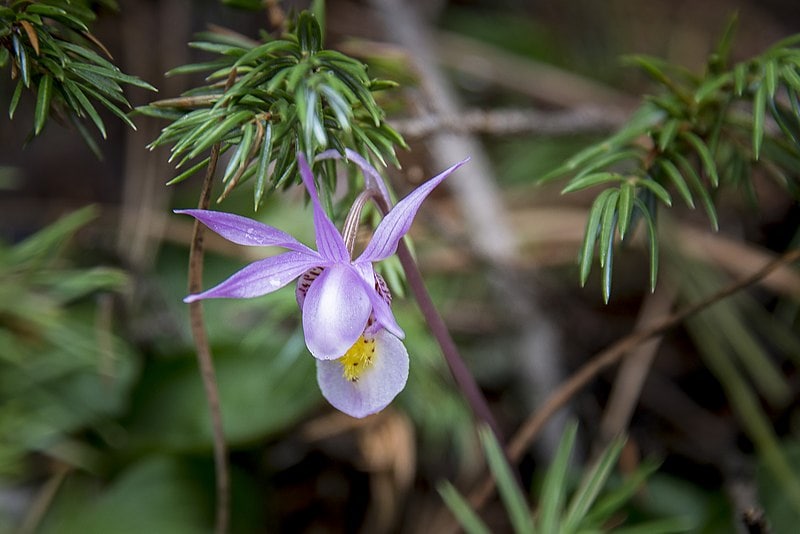
| Height | Up to 8 inches |
| Color | Purple, red, pink, white |
This flower usually has white around the rim and purple spots across the petals. However, they can vary in coloration a little bit, depending on where they are found. This flower is related to the orchid, and it’s pretty easy to tell. It does look very similar, especially when it comes to the bloom shape.
Often, this flower is found in mountain forests where there is little human activity. It doesn’t like the sun, so shaded areas are the best option for those looking to spot one.
10. Orange Agoseris

| Height | 1–3 feet tall |
| Color | Orange, yellow |
While it is mostly known for its orange blooms, this flower can also come in yellow. However, it is the only member of its family that comes in orange, which is why it got its name. This flower is very popular for those with flower gardens. However, you can also find it on the grassy slopes of the mountains. It prefers the higher altitude, which is something to keep in mind.
Usually, this flower prefers moist soil and lots of sun.
11. Alpine anemone
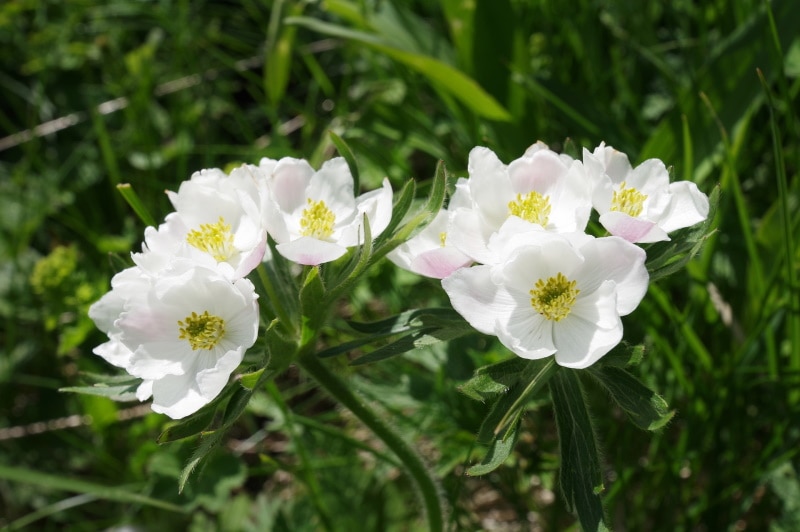
| Height | Up to 9 inches |
| Color | White, blue |
This particular flower blooms rather early in the year. Therefore, it is one of the first wildflowers that you can spot in the spring. Most flowers are completely white. However, some do have a bit of a blueish tint to them.
This plant is rather tall. It doesn’t even reach a foot, so you’ll have to look for it close to the ground. Furthermore, it prefers sunny areas. Usually, it does best in mountainous places for this reason.
Conclusion
There are many native wildflowers in Washington state, and many of them are pretty easy to identify. After only a bit of research, most people can identify types of wildflowers pretty easily when they are in bloom. After all, the color, shape, and size of blooms vary so widely that finding two that look the same is very rare.
For this reason, identifying wildflowers is an easy way to start being more familiar with your natural surroundings.
Featured Image Credit: COULANGES, Shutterstock
Contents
 The 11 Types of Wildflowers That Grow in Washington State
The 11 Types of Wildflowers That Grow in Washington State